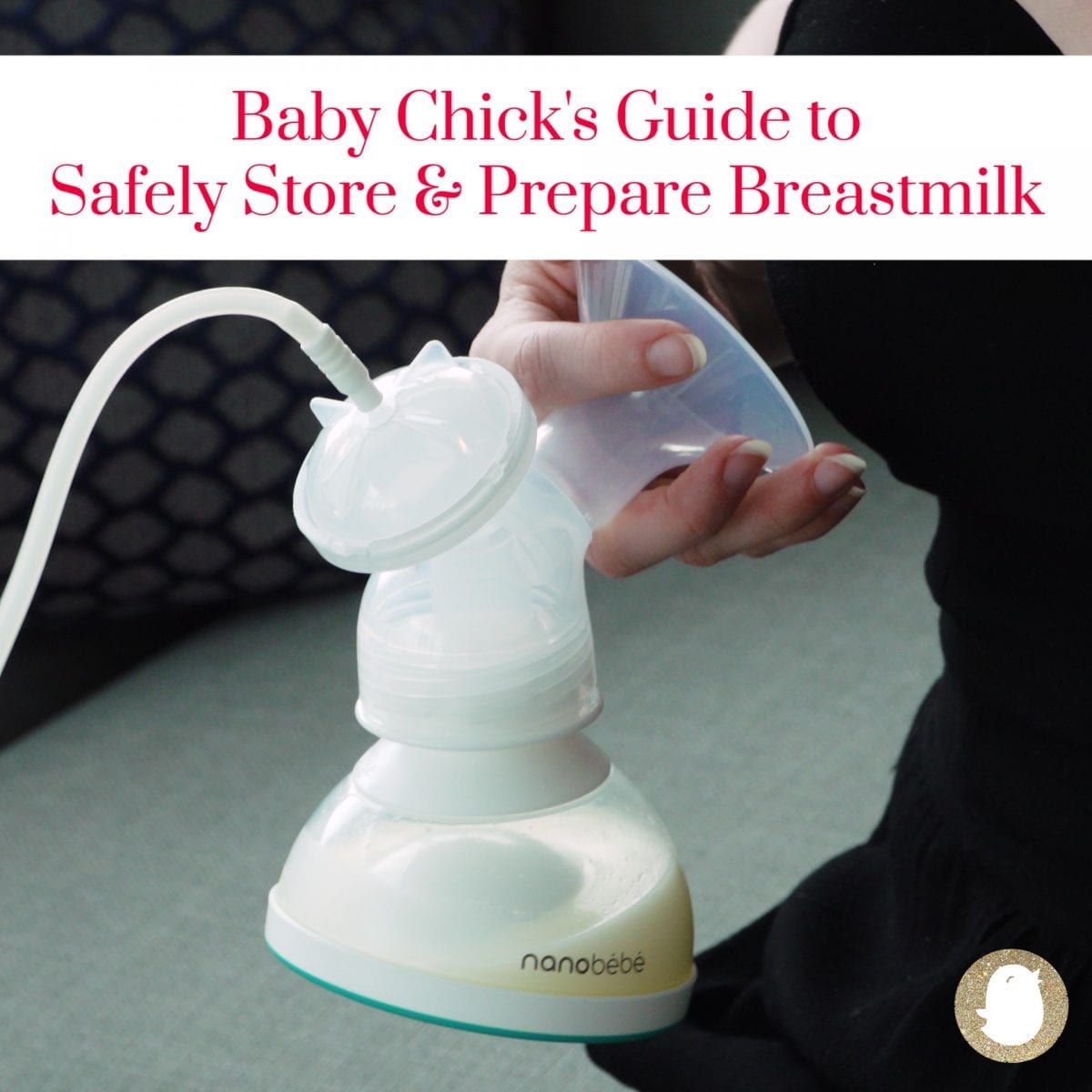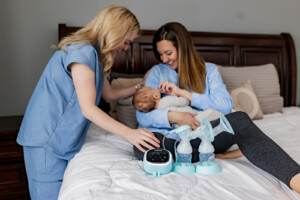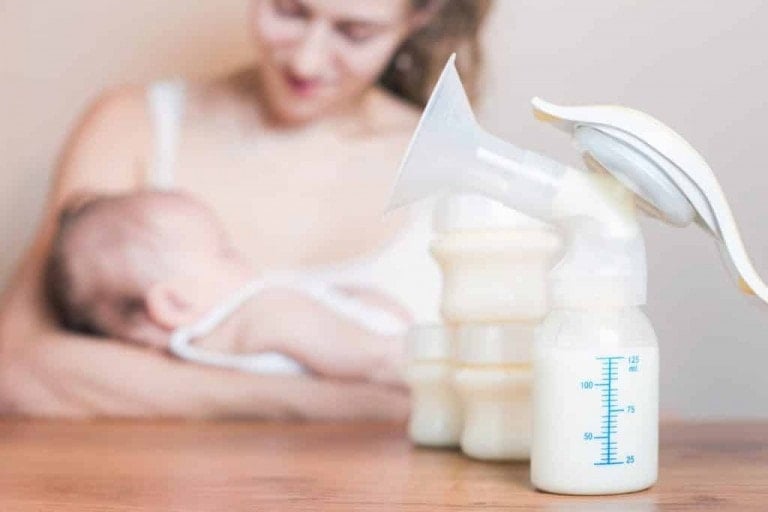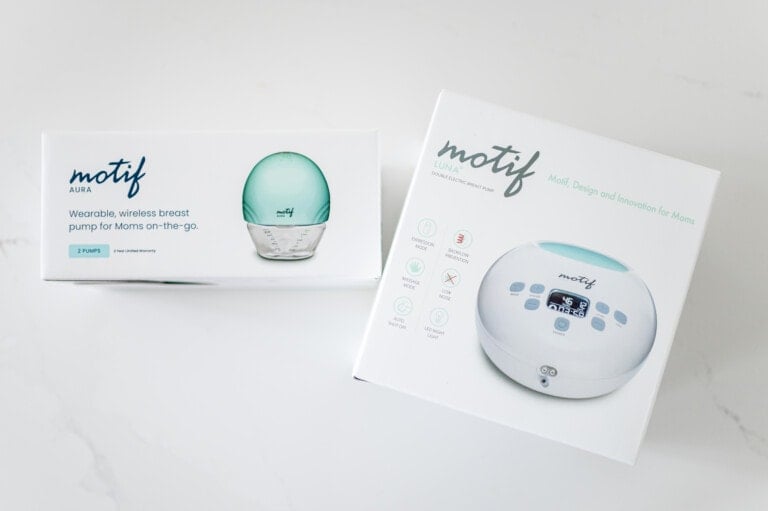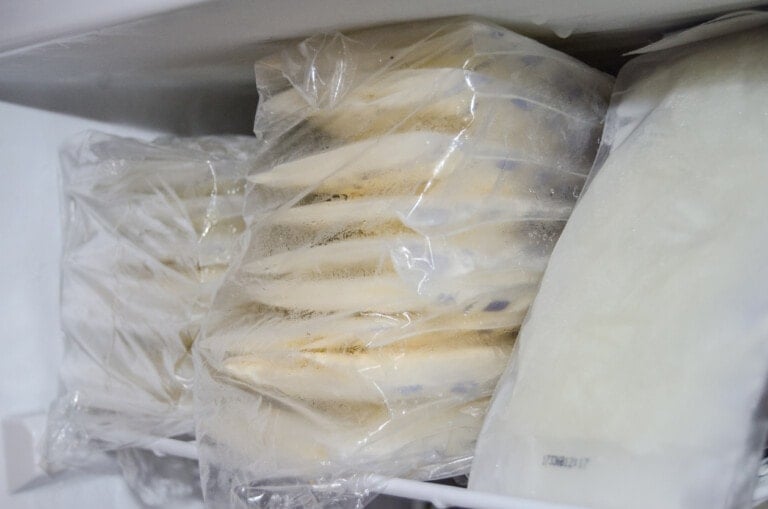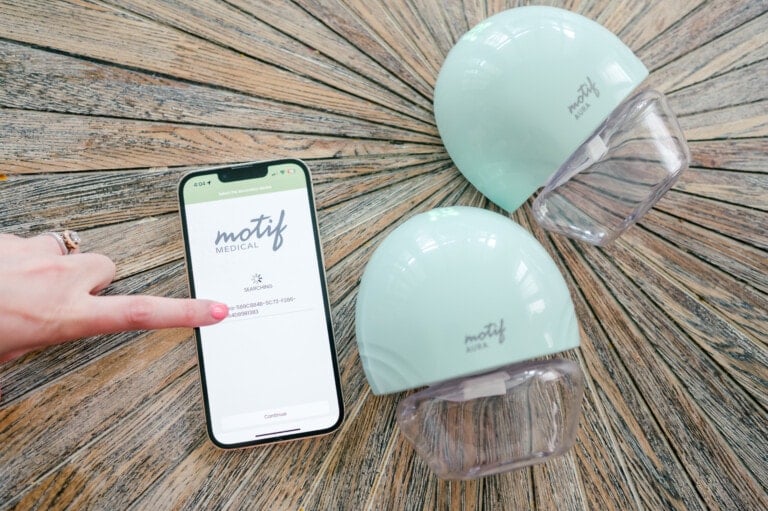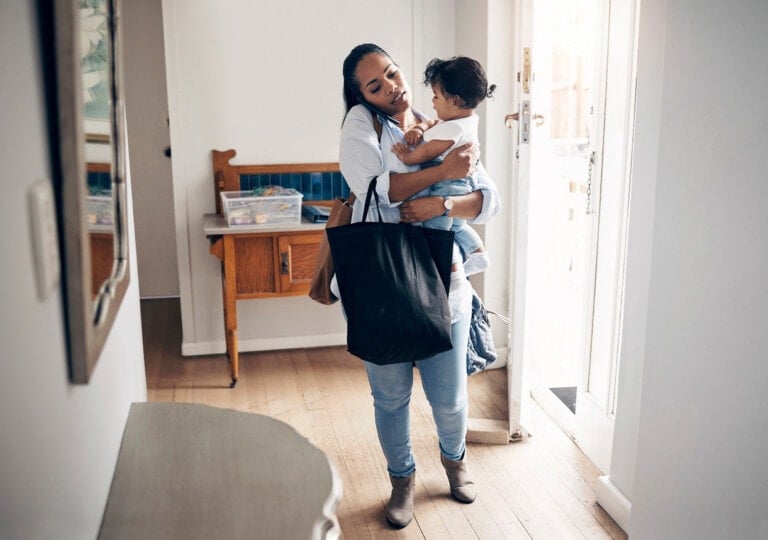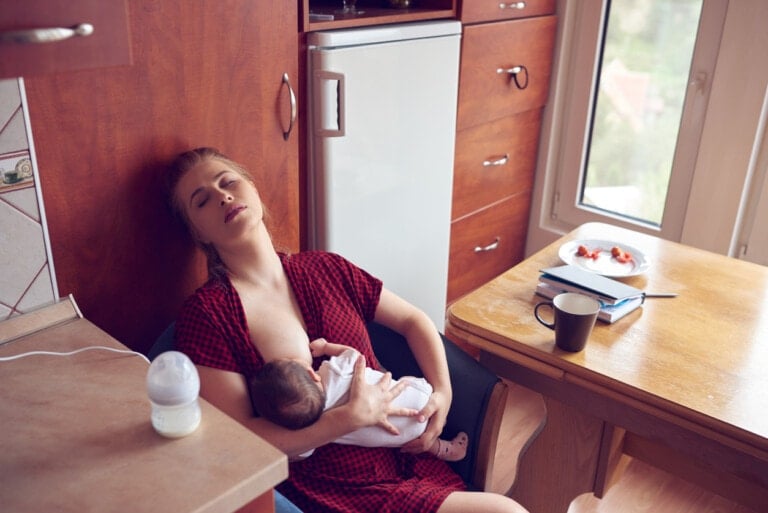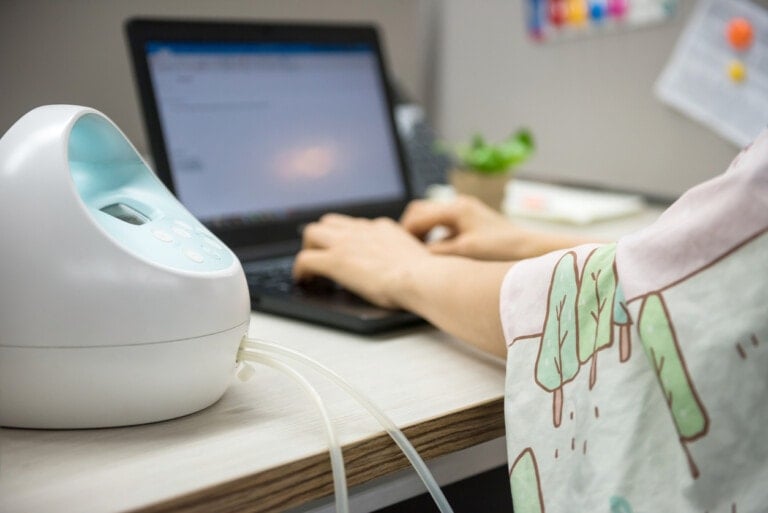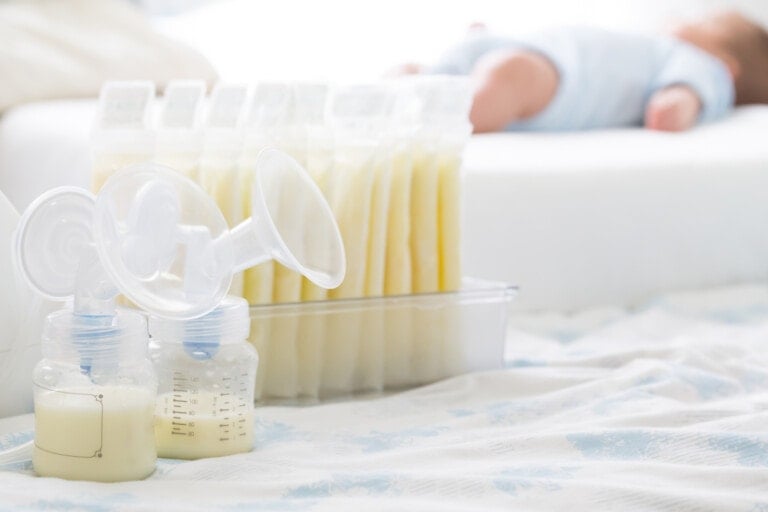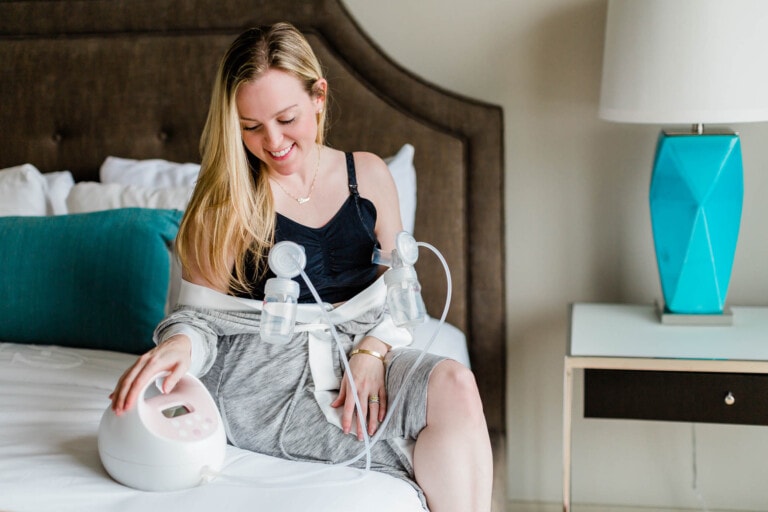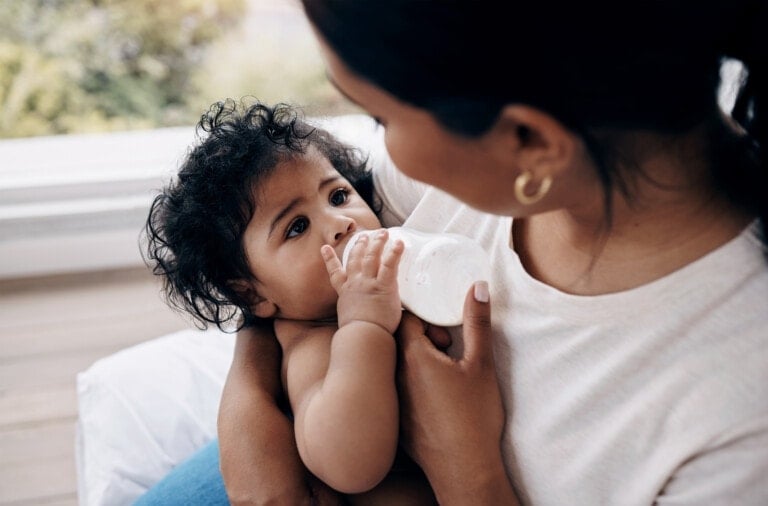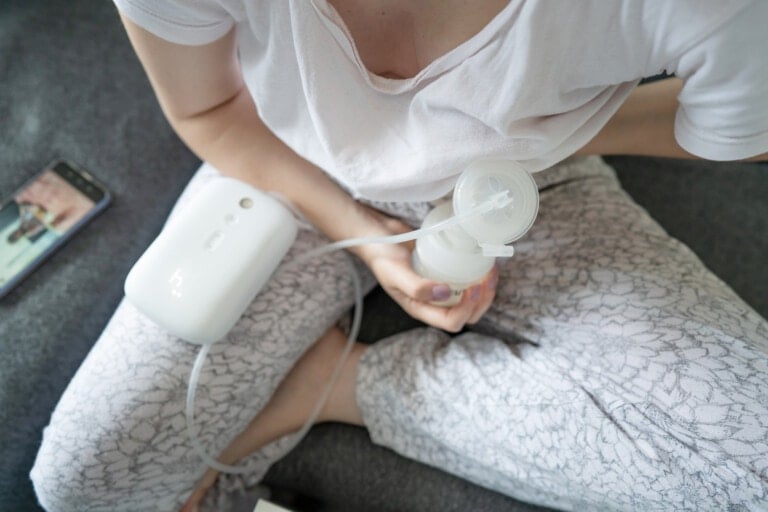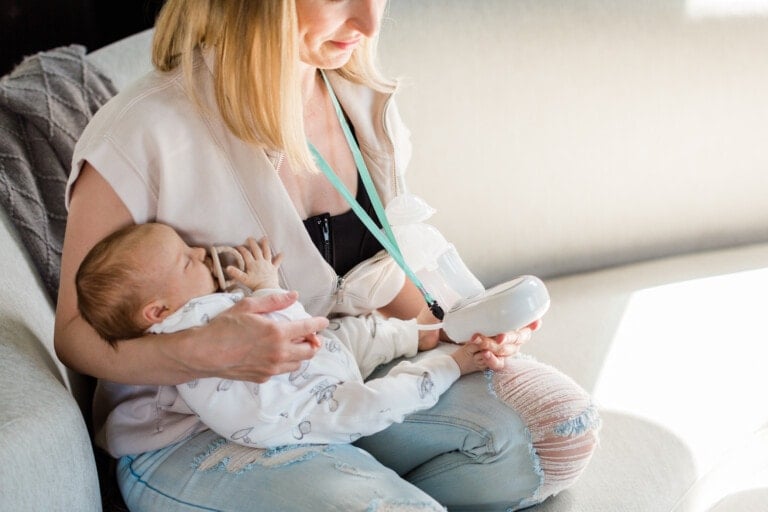If you’re a breastfeeding mom, at some point or another you will probably have to pump. But how long is breastmilk good for in room temperature, in a cooler, in the fridge and in the freezer? When should you discard? Here is everything you need to know about how to properly and safely store and prepare breastmilk.
Breastmilk Storage Guidelines
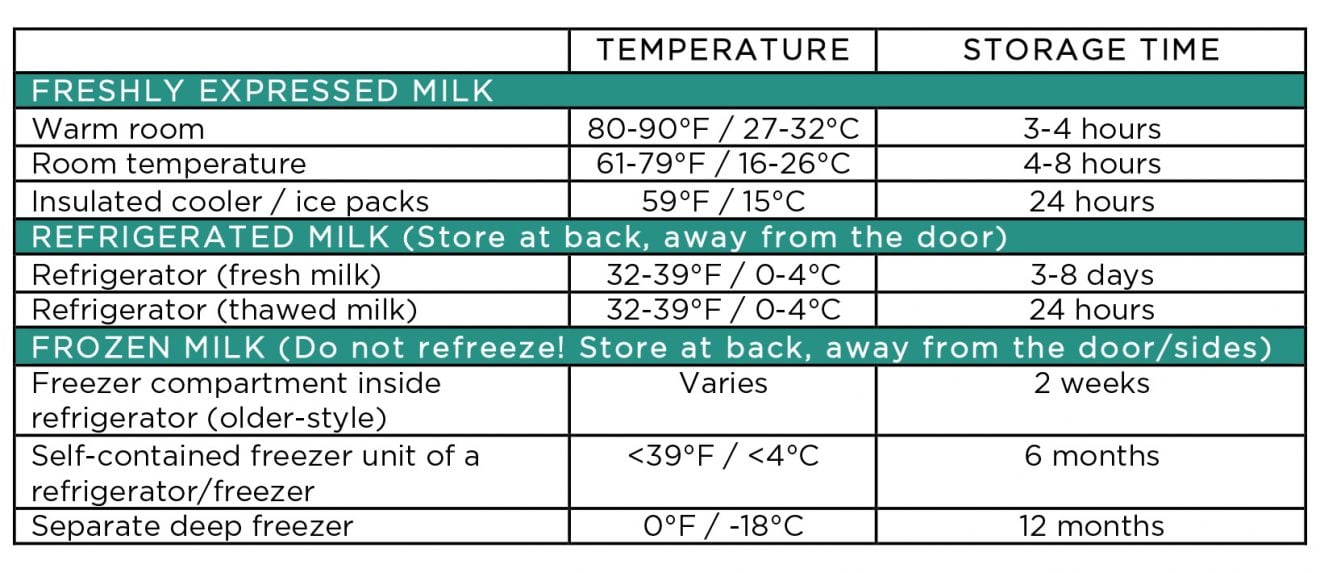
* These breastmilk storage guidelines are for milk expressed for a full-term healthy baby. If your baby is seriously ill and/or hospitalized, please discuss storage guidelines with your baby’s doctor.
Once you have expressed your breastmilk that you would like to store, you can either keep it in your storage bottle and place it in the refrigerator or you can transfer it to a breastmilk storage bag. Be sure to label it with the date that you expressed the pumped milk and how many ounces are in that storage bag. We recommend storing all different amounts (1-5 ounces) in bags so that you can avoid wasting any breastmilk. This way if your baby wants a little more breastmilk to eat, you don’t have to eat up and waste another 5 ounce bag of breastmilk.
TIP! Always use the oldest expressed breastmilk first so as to avoid any milk expiring. Breastmilk is considered spoiled once it smells bad or tastes sour.
How to Thaw Breastmilk
There are two ways we recommend thawing breastmilk:
- Transfer the frozen breastmilk storage bag to the refrigerator to slowly thaw. This takes about 12 hours to thaw. We recommend doing this the night before you need to use the frozen milk for a feeding the next day.
- Place the frozen breastmilk storage bag into a warming bowl with warm water. This will thaw the breastmilk much faster.
Do not refreeze once you have thawed the breastmilk!
You will notice that the cream has risen to the top once it is frozen. When you thaw the breastmilk, gently swirl it to combine.
TIP! Never shake breastmilk! Breastmilk is made up of living cells. When you shake breastmilk you are damaging the molecules and breaking apart the proteins. It’s important that the proteins remain together and intact because they help protect the lining of baby’s gut.
How to Warm Breastmilk
If you want to warm breastmilk that is already thawed from the fridge, we recommend getting a bowl and filling it with warm water. Place the bottle or storage bag of breastmilk inside for a few minutes for the milk to warm.
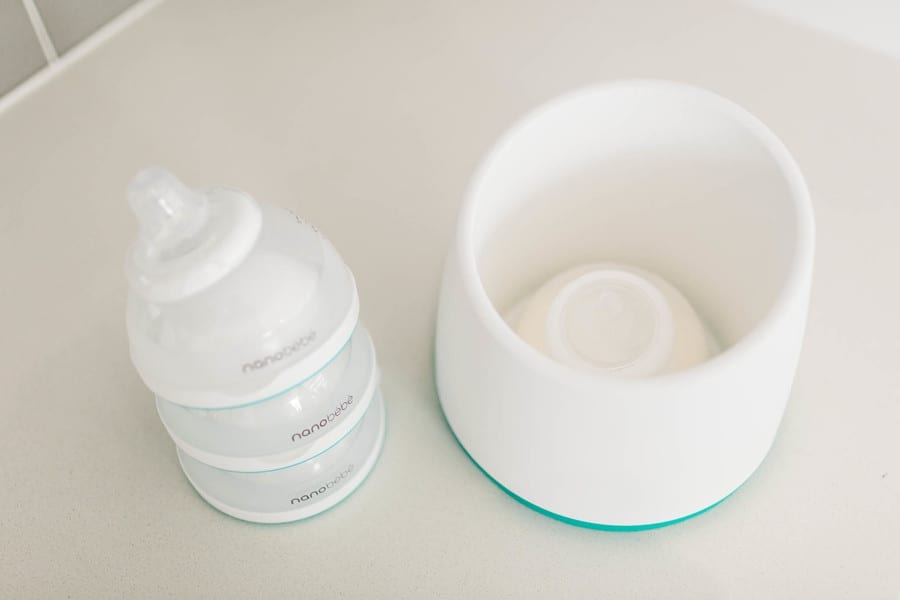
TIP! Always check temperature of milk before giving to baby. Do this by squirting a little out of onto the inside of your arm. That skin is more sensitive and will be able to better tell if the milk is too warm for baby.
FAQs
Can different pumping sessions and/or different pumping dates be combined in one bottle for a feeding? Yes. Just avoid adding warm milk to a container that has previously refrigerated or frozen milk. It’s recommend to cool the new milk before combining.
Can I heat breastmilk in the microwave or on the stove to warm? No. These can create hot spots which can scald your baby’s mouth and overheating breastmilk destroys its nutritional value.
Can’t I use a bottle warmer to heat my breastmilk? That is an option, however, they can potential overheat your breastmilk which causes killing beneficial nutrients. This is why we recommend using a warming bowl instead.
If my baby doesn’t finish the bottle at one feeding, is it okay to save it and give it again later? Yes, but offer it within 1-2 hours. Discard it after that time. Also, do not put the remaining milk back in the fridge. It is not recommended to reheat breastmilk that has already been heated. Keep the remaining milk at room temperature and use within 2 hours.
Breastfeeding and pumping for our babies is an incredible gift to give them. With these guidelines of how to safely store and prepare breastmilk now you can feel confident that you are giving your baby the best food possible.














